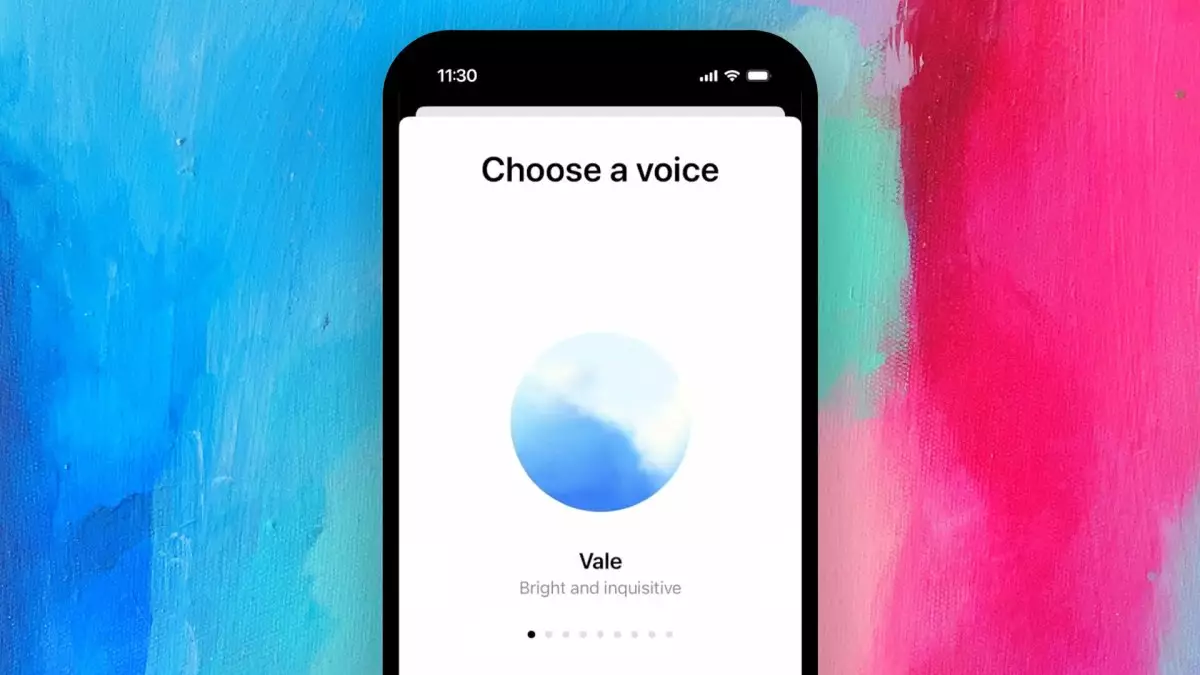On a momentous Tuesday, OpenAI made waves by announcing the rollout of its Advanced Voice Mode (AVM) to an expanding group of paying customers within the ChatGPT ecosystem. This development signifies a transformative leap in how users interact with the AI, bringing a more lifelike audio experience to conversations. Initially, this feature is being made available to subscribers of ChatGPT’s Plus and Teams tiers, with plans for Enterprise and Edu customers to gain access shortly thereafter. This strategic expansion reflects OpenAI’s commitment to enhancing user experience and pushing the boundaries of artificial intelligence capabilities.
The rollout of AVM is not just about the addition of new features; it also presents a refreshed visual design. The new user interface features a blue animated sphere, which replaces the previously showcased black dots. This change aims to create a more engaging and user-friendly interaction environment, making the audio component feel less mechanical and more organic. Users will be notified via a pop-up in the ChatGPT application, providing an intuitive transition as they begin to utilize this advanced functionality.
Furthermore, OpenAI has incorporated enhancements beyond just audio capabilities. Customers can now engage with their AI in a more customizable manner, with the introduction of Custom Instructions and Memory functionality. These features allow users to tailor ChatGPT’s responses and even recall previous conversations, enriching the interactive experience significantly.
OpenAI understands the importance of variety in expressing a personality through voice, which is why this rollout also includes five new voices—Arbor, Maple, Sol, Spruce, and Vale. This brings the total number of voices to nine, a significant expansion that parallels competitors like Google’s Gemini Live. The naming convention reflects a thematic focus on nature, emphasizing the goal of making the interaction feel more natural and relatable to users.
Interestingly, the rollout does exclude a previously highlighted voice, Sky, which came under scrutiny due to allegations from actress Scarlett Johansson regarding its similarity to her voice. OpenAI’s swift removal of Sky underscores the complexities and sensitivities involved in developing voice synthesis technology, highlighting the need for ethical considerations in AI development.
Despite the advancements brought by AVM, it’s worth noting that some promised features remain absent. Among these is the ability for ChatGPT to engage in video and screen sharing—a capability that OpenAI demoed during its spring update and promised would empower users to ask real-time questions about on-screen content. This multimodal capability, which allows ChatGPT to process both visual and auditory inputs simultaneously, remains in the shadows for now, with no definitive timeline for availability.
OpenAI’s decision to withhold this functionality while continuing to refine the voice capabilities raises questions about their development priorities. While enhancing audio clarity and responsiveness are crucial, the integration of multimodal features seems to be a major draw for users looking for comprehensive AI interactions.
Performance and Regional Availability
Feedback from early adopters of the AVM indicates improved understanding of accents and a more seamless conversational flow; however, some technical glitches continue to surface. The company claims ongoing enhancements have been made since the alpha testing phases, suggesting a proactive stance toward user feedback and technological improvement.
An aspect of the rollout that may disappoint some users is the limited regional availability of AVM. Key areas, including the EU and the U.K., currently do not have access to this new feature, which could hinder OpenAI’s global outreach and user engagement efforts. As the AI landscape evolves, the company must navigate both technical challenges and regulatory frameworks to maximize the benefit of its innovations.
OpenAI’s rollout of the Advanced Voice Mode is a significant step forward in the conversational AI sphere, enriching the user experience with customizable and engaging auditory options. While there remain features that users are eagerly anticipating, the improvements seen in AVM and the incorporation of innovative instructional capabilities solidify OpenAI’s position as a leader in the industry. As the development continues, the world watches eagerly to see how these advances will shape the future of digital communication.

